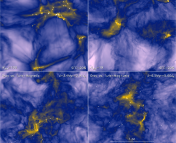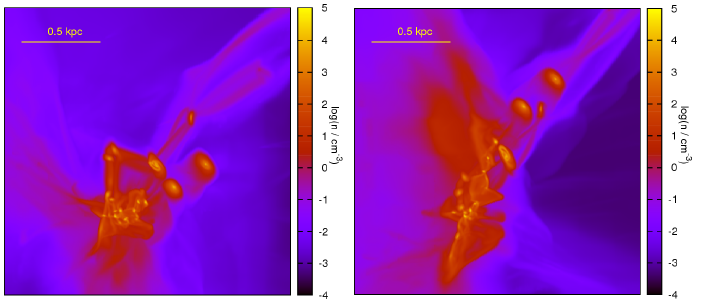- Paper Title: What Sets the Initial Rotation Rates of Massive Stars?
- Authors: Anna L. Rosen, Mark R. Krumholz, Enrico Ramirez-Ruiz
- 1st Author’s Institution: UC Santa Cruz
Today’s astrobite features the work of one of our own astrobites authors, Anna Rosen. In this paper, Rosen and her collaborators present a theoretical analysis of what regulates the initial spin rates of massive stars. Using a series of simulations that take into account magnetic coupling between a protostar and an accretion disk, the authors attempt to determine whether magnetic torques could be responsible for slowing the rotation of newborn massive stars.

An artist's rendition of the accretion stage of stellar evolution. Material accretes from the disk onto the star along magnetic field lines. Image credit: https://www.cfa.harvard.edu/~scranmer/cranmer_st_cool.html
While stellar evolution is in many respects one of the most well understood areas of astrophysics, there are still quite a few unanswered questions about the process of forming stars. The general ideas are straight forward: as a molecular cloud collapses, the dense core becomes a protostar, while the angular momentum of the cloud causes an accretion disk to form. Material from the disk accretes on to the protostar, probably along magnetic field lines emanating from the stellar poles and threading the disk. (See the artist’s rendition at right.) However, low mass stars are far better studied than their massive counterparts, and we have yet to satisfactorily observe an accretion disk around a massive star.
In addition, there is a big problem in this star-formation scenario. Angular momentum conservation means that if the initial molecular cloud is rotating even slightly, material will gain speed as it funnels down to smaller radii and is deposited onto the protostar. This should have the effect of “spinning up” the star – that is, causing it to rotate more quickly. But there is a fundamental limit to how fast a star can rotate, called the break up speed, which is set by the balance between the star’s gravity and the centripetal force at its surface due to its rotation. Currently, the clouds that we observe forming stars appear to have at least 1000 times more angular momentum than the stars they form, so figuring out how to get rid of this excess angular momentum is an active area of research.
In this paper, Rosen et al. explore the idea that magnetic coupling between a protostar and its accretion disk could provide enough torque to slow down the star’s rotation, balancing the gravitational torques of accreting material. While this idea has been proven to work for low-mass stars, there are several problems with massive stars that make it less viable. Massive stars evolve more quickly, meaning that there is less time for the two torques to balance and the rotation rate to equilibrate. In addition, their disks disappear more quickly, because the higher luminosity of the star has the effect of blowing away most of the gas. And lastly, the more massive stars have weaker magnetic fields relative to their binding energy, meaning that there is less magnetic torque overall.

This figure shows the mass dependence of several stellar features during the first million years of accretion. On the top left is shown the mass versus stellar radius; the top right displays stellar radius as a function of time; the bottom left is stellar period vs. time; and the bottom right displays angular speed as a function of the breakup speed versus time.
Using a series of simulations with stars of different masses, from a 0.5 solar-mass star to a 50 solar-mass star, Rosen et al. determine that, while effective for low-mass stars, magnetic coupling with the disk simply cannot provide enough torque to account for the different rotation rates seen in young massive stars. The figure above shows a number of features that vary with stellar mass as a result of magnetic torques, including stellar radius, the spin period, and the star’s rotation rate as a fraction of its breakup speed. But as the bottom right panel shows, even with magnetic torques, the rotation rate of the massive stars is essentially unaffected during the accretion phase. This means that the density of the star-forming environment is probably not the factor that sets initial spin rate. Therefore, the authors conclude that other factors must play a role – for example, stellar winds blowing off material once the star has evolved onto the main sequence.





Trackbacks/Pingbacks